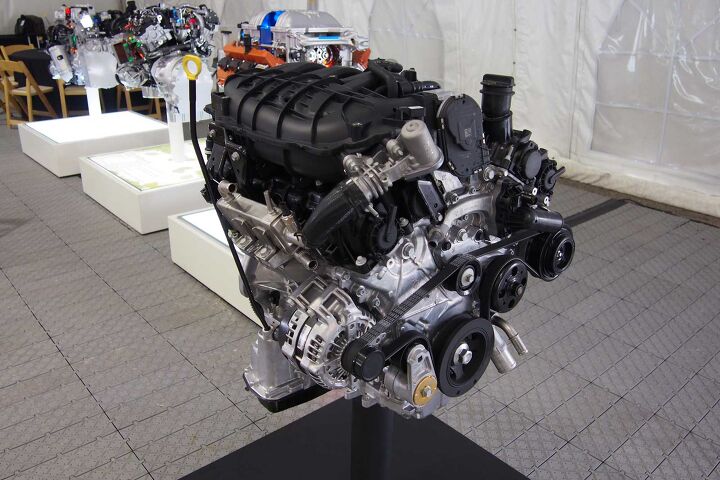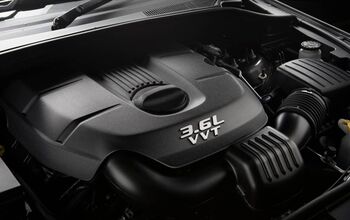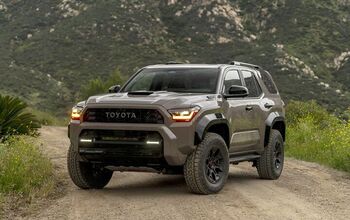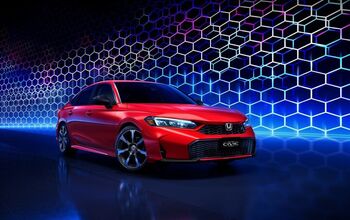Chrysler Pentastar V6 Significantly Enhanced for 2016

Chrysler’s award-winning Pentastar V6 has received a number of significant upgrades for 2016. These enhancements improve torque output, efficiency and even a reduced weight.
Better by Design
“Our direction at the beginning of the program … [was to] go out and further improve upon it,” said Steve Gorgas, chief engineer of Pentastar engine programs, engines and electrified systems engineering. And that’s just what FCA’s team did with this powerplant.
Most importantly, fuel efficiency has been improved by more than 6 percent. Additionally, low-RPM torque has been increased by nearly 15 percent. Despite adding 13 pounds of additional content to this powerplant, its overall weight has been reduced by as much as four pounds. And that right there is the definition of smart engineering.
Not surprisingly, horsepower has gone up as well. When this revised bent-six launches in the 2016 Jeep Grand Cherokee later this year, it should deliver 295 hp, a modest increase from its 290-horse stable today.
Missing Technology, Sound Reasoning
Gorgas said that on its own, direct injection doesn’t give much of a fuel economy improvement. But, “If it was a boosted engine … [then] DI becomes part of the recipe” because it delivers additional benefits and, ultimately, more bang for your buck.
However, in naturally aspirated applications, Gorgas argues there are more tradeoffs to DI than benefits. “Parasitic losses that come from driving the high-pressure fuel pump are quite high,” he noted, which eats into fuel economy. Also, engines that are fitted with this technology tend to be nosier than their port-injected counterparts, which means additional NVH (noise, vibration and harshness) work is required, something that can increase a car’s weight.
SEE ALSO: Is Carbon Buildup a Problem With Direct Injection?
Direct injection is also expensive, adding unnecessary cost to vehicles. “In the market this engine competes in, DI isn’t a requirement,” Gorgas said.
But beyond all of this, Gorgas noted that a competitor is having trouble with its direct-injected engines. The way fuel is delivered and burned in a DI combustion chamber can produce abrasive particulates, tiny bits that can sneak past piston rings and into the engine oil where they can cause accelerated wear. When pressed to elaborate on which competitor was having this issue, he would not comment.
No Stone Unturned
In addition to this bit of cylinder-head magic, the powerplant’s variable-valve timing system has been altered. FCA has implemented torque-activated cam phasers, which require less oil to function, something that improves efficiency. Engineers also increased how far the VVT system can operate, upping it to 70 degrees from just 50 before. Start-stop technology further cuts consumption.
A cooled EGR system reduces emissions and slashes pumping losses. This arrangement also provides knock-free operation in real-world driving conditions.
Friction reduction was a key driver for improved fuel economy and there are many areas that have been targeted. A new material on the timing-guide faces cuts resistance, as do low-tension piston rings, carbon-coated wrist pins and new valve springs.
SEE ALSO: Everything You Ever Wanted to Know about the Shelby GT350’s Engine
Beyond all of this, the compression ratio has been upped from 10.2-to-1 to 11.3-to-1. Additionally, high-energy ignition coils, a revised intake manifold with longer runners for greater torque production, high-tumble ports and more all help improve performance and efficiency.
Chrysler’s Pentastar V6 has been a winner since it first landed on the market about five years ago. Whether it powers a Dodge Grand Caravan or Jeep Wrangler, Chrysler 300 or Ram 1500, it delivers ample thrust and impressive refinement. The flexibility of this engine is striking and it looks like it’s only going to get better for the 2016 model year.
Discuss this story on our Jeep Forum

Born and raised in metro Detroit, Craig was steeped in mechanics from childhood. He feels as much at home with a wrench or welding gun in his hand as he does behind the wheel or in front of a camera. Putting his Bachelor's Degree in Journalism to good use, he's always pumping out videos, reviews, and features for AutoGuide.com. When the workday is over, he can be found out driving his fully restored 1936 Ford V8 sedan. Craig has covered the automotive industry full time for more than 10 years and is a member of the Automotive Press Association (APA) and Midwest Automotive Media Association (MAMA).
More by Craig Cole














































Comments
Join the conversation
The only thing that engine is good for is a boat anchor. Typical Chrysler, feeding oats to a dead horse. Thanks Sergio. You're on the road to screw up Chrysler as bad as Damlier and the "investment" bankers.
Some facts please - a family member has this engine in a 2015 Grand Cherokee - great torque very quiet and resonable mileage.